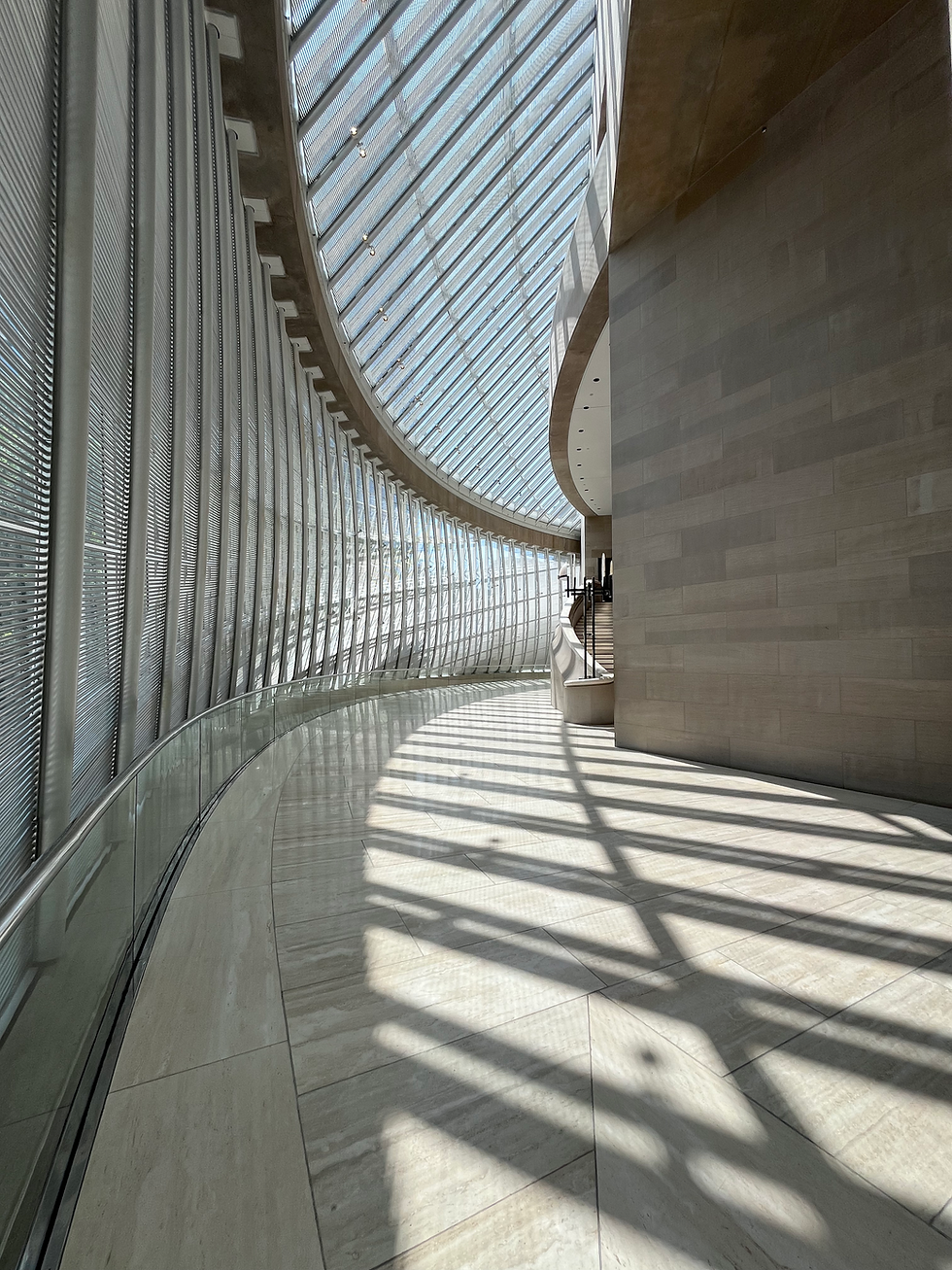Exploring I. M. Pei's Architectural Legacy in Dallas Beyond City Hall
- DCH
- Oct 31
- 2 min read
Updated: Nov 1
I. M. Pei is a name that stands out in the world of architecture, synonymous with innovation and modern design. While Dallas City Hall was his first work in the city, his firm, Pei, Cobb, Freed and Partners has crafted numerous other remarkable buildings here as well. This post will highlight two primary masterpieces including the Meyerson Symphony Center and Fountain Place, while also touching on Pei's significant works elsewhere, such as the famous National Gallery of Art in Washington, D.C., and the glass pyramid at the Louvre in Paris.
The Meyerson Symphony Center
Opened in 1989, the Meyerson Symphony Center is one of Pei's most celebrated contributions. Nestled in the vibrant Arts District, this concert hall is famed for its outstanding acoustics and refinement. The exterior boasts a stunning blend of glass and granite, harmoniously integrated with its surroundings.
Inside, the grand concert hall is designed for the Dallas Symphony Orchestra, ensuring an optimal acoustic experience. The hall's unique shape and use of natural materials enhance sound quality, making it a favorite venue for both musicians and audiences alike. In 2022, the center hosted over 250 events, drawing around 300,000 visitors, showcasing its pivotal role in Dallas’s cultural scene.

Fountain Place
Henry Cobb, Pei's business partner, was chief designer of Fountain Place, completed in 1986, has made this 60-story skyscraper a defining feature of the Dallas skyline. Its slanted roof and reflective glass façade create a striking visual that resembles a crystal.
Beyond aesthetics, Fountain Place incorporates sustainable features like energy-efficient systems and a rainwater collection system. The surrounding landscape includes a 1.5-acre fountain and gardens, offering a tranquil oasis amidst the urban bustle.

Pei's Major Works Elsewhere
While Pei's impact on Dallas is profound, his architectural reach extends far beyond Texas. The National Gallery of Art in Washington, D.C., is a prime example, showcasing a modernist design that complements the classical architecture around it. The East Building, with its dynamic geometric shapes and vast glass walls, has become a landmark itself, attracting millions of visitors each year.
Also iconic is the Louvre's glass pyramid, completed in 1989, which serves as the museum's main entrance as part of a major renovation and urban planning achievement. The pyramid's modern design contrasts beautifully with the historic architecture of the Louvre, illustrating a successful merger of tradition and innovation. This architectural statement reshaped how visitors experience this renowned museum, allowing over 9 million guests to enjoy its offerings annually.

Reflecting on Pei's Imprint
I. M. Pei's architectural legacy in Dallas is extensive, reaching beyond City Hall. His work on the Meyerson Symphony Center, Fountain Place, Energy Plaza, and One Dallas Center demonstrates his innovative design philosophy and commitment to enhancing urban environments. Each building not only enriches the skyline but also contributes to Dallas's cultural scene.
This is why it is vitally important that we preserve Dallas City Hall as his first commission in the city.
Pei himself in 1987 stated in an interview with 60 Minutes that our society treated buildings as far too disposable - let's not prove him right with his own building.




